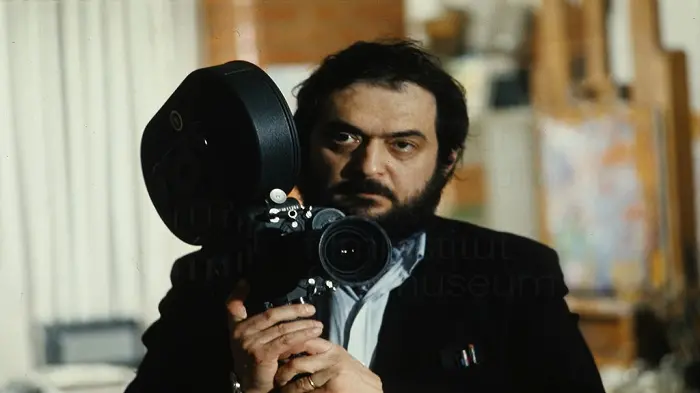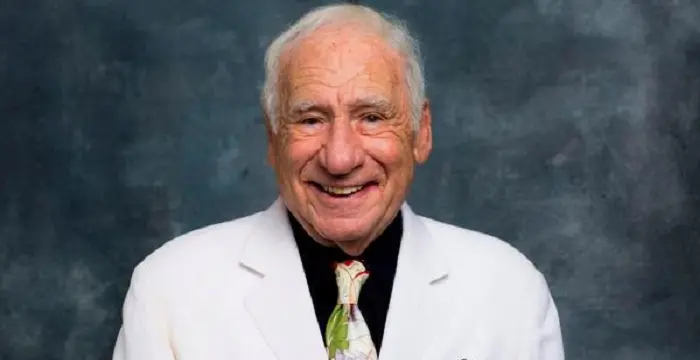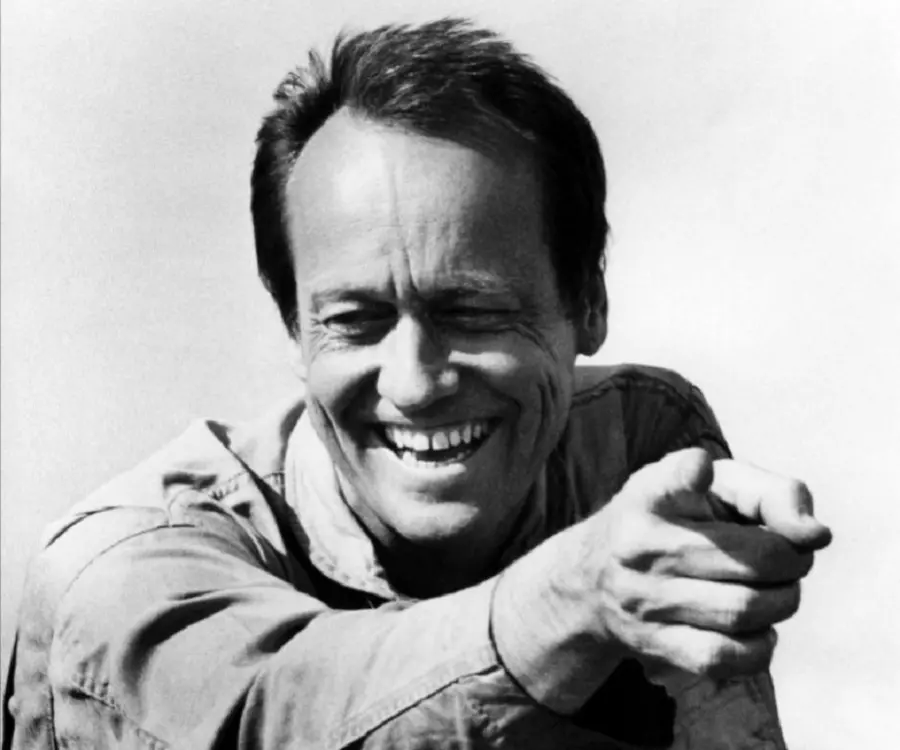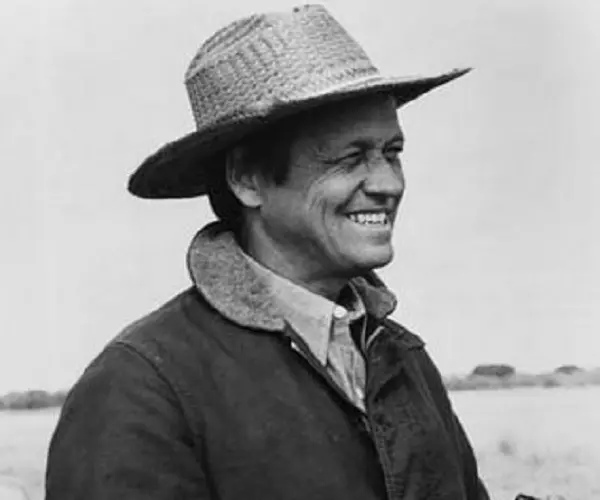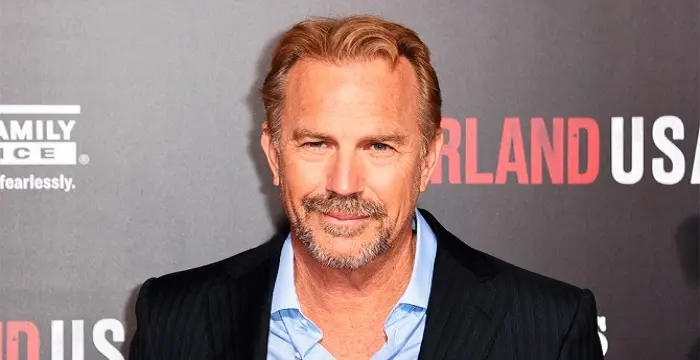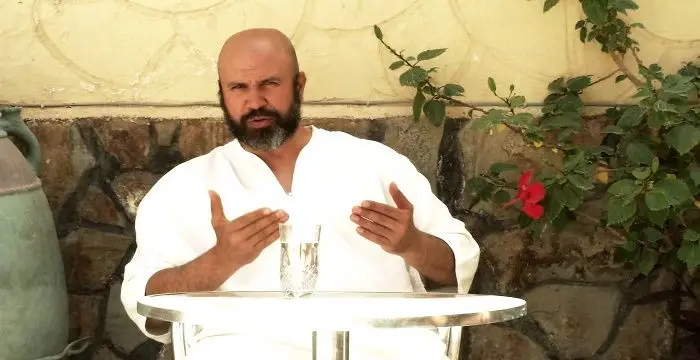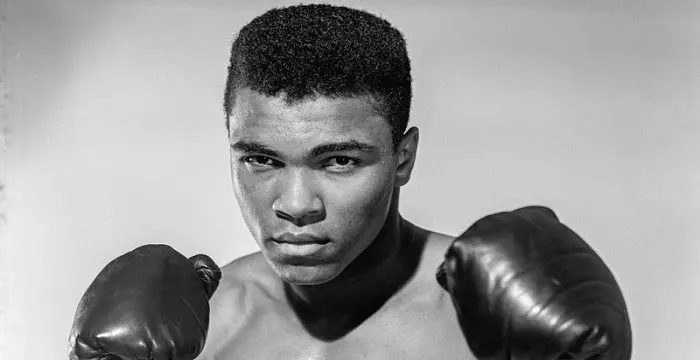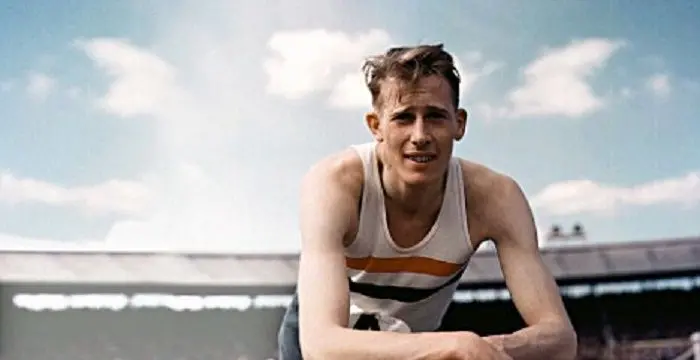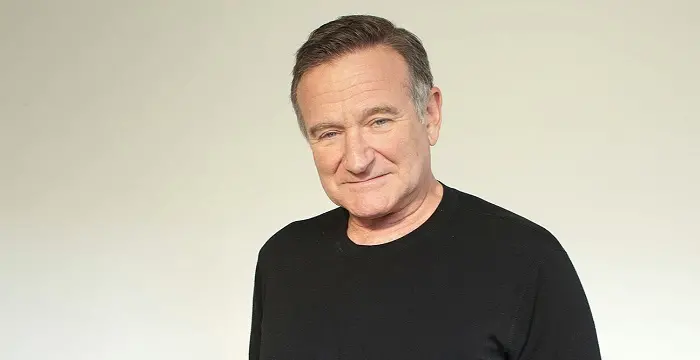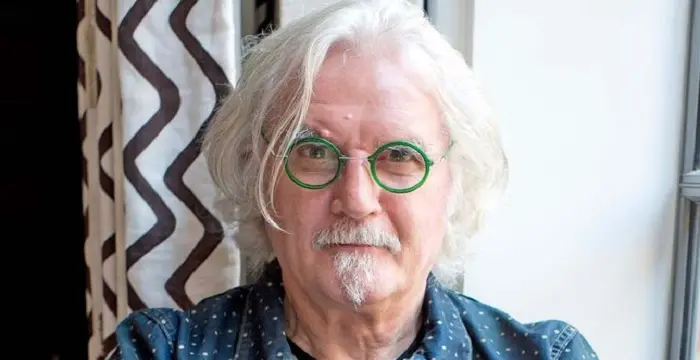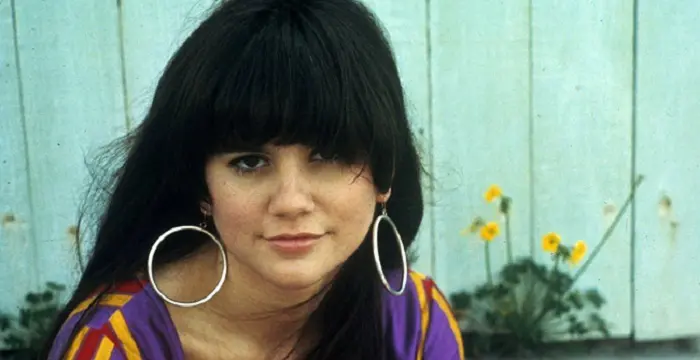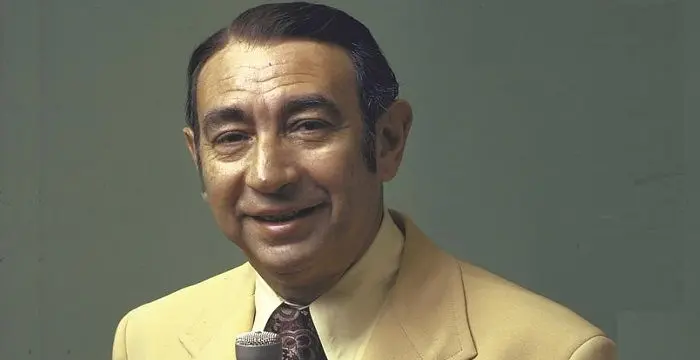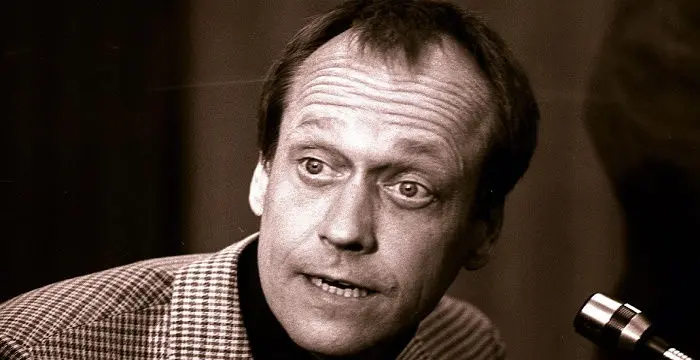
George Roy Hill - Film Director, Timeline and Personal Life
George Roy Hill's Personal Details
George Roy Hill was a renowned American film director
| Information | Detail |
|---|---|
| Birthday | December 20, 1921 |
| Died on | December 27, 2002 |
| Nationality | American |
| Famous | Film & Theater Personalities, Directors, Film Director |
| City/State | Minnesota |
| Spouses | Louisa Horton Hill (m. 1951) |
| Childrens | George Roy Hill III, John Hill |
| Birth Place | Minneapolis, Minnesota, United States |
| Gender | Male |
| Sun Sign | Sagittarius |
| Born in | Minneapolis, Minnesota, United States |
| Famous as | Film Director |
| Died at Age | 81 |
// Famous Film Director
Stanley Kubrick
Stanley Kubrick was a screenwriter and film director known for his movies like ‘The Clockwork Orange’ and ‘The Shining’. This biography of Stanley Kubrick provides detailed information about his childhood, life, achievements, works & timeline.
Baz Luhrmann
Baz Luhrmann is an Australian writer, filmmaker, and producer. Check out this biography to know about his birthday, childhood, family life, achievements and fun facts about him.
Mel Brooks
Known as the king of farces and comic parodies, Mel Brooks is a famous American film director, comedian, actor, producer and composer. This biography provides detailed information on his childhood, life, career, works, achievements & timeline.
George Roy Hill's photo
Who is George Roy Hill?
George Roy Hill was a renowned American film director best known for movies such as ‘Butch Cassidy and the Sundance Kid’ and ‘The Sting’. Born in a well-to-do family in Minnesota, he was educated first at prestigious The Blake School and then at Yale University. He developed a passion for classical music and flying early in his life. Subsequently, he served as marine pilot in the World War II and thereafter went to Dublin to study music and literature at Trinity College. It was here at Dublin, that he was first introduced to professional theatre and on returning to the U.S. he began working at the Broadway. However, before long, he was recalled to fight in the Korean War. On coming back to civilian life, he continued working at the Broadway and made a few television films. Ultimately, it was at the age of forty that he first started making films and within a short period, he made his place in Hollywood. In the late 1980s, he suddenly left film making and returned to Yale University, this time to teach drama.
// Famous Film & Theater Personalities
Jacob Elordi
Jacob Elordi is an Australian actor. Let’s take a look at his childhood, family, personal life, career, etc.
Wentworth Miller
Wentworth Miller is an American actor and screenwriter who achieved recognition for his role in the TV series ‘Prison Break’.
Skai Jackson
Skai Jackson is an American child actress with huge fan following. Find more about her family & personal life, relationships, facts and more.
Childhood & Early Life
George Roy Hill was born on December 20, 1921, in Minneapolis into a well-to-do family that owned Minneapolis Tribune. His father’s name too was George Roy Hill and his mother’s name was Helen Frances Hill.
Young George had his schooling at The Blake School and passed out from there in 1939. While in school, he developed an interest in flying and obtained his license at the age of 16. He was equally fond of classical music, Johann Sebastian Bach being his favorite musician.
After passing out from school, he entered the Yale University with music. Here he studied under notable musicians, including German composer Paul Hindemith and earned his degree in 1943.
Afterwards, he joined United States Marine Corps as part of his military service. He was stationed at the South Pacific, where he served as cargo pilot. On his release, he first began working as a newspaper reporter in Texas.
Later taking advantage of the GI Bill, he went to Ireland to study music and literature at Trinity College, Dublin. There he worked on James Joyce and his use of music in Ulysses and Finnegans Wake.
Career
In 1947, while still in Ireland, he made his stage debut with ‘The Devil's Disciple’, a play written by Bernard Shaw and produced by Cyril Cusack at Gaiety Theatre, Dublin. Later in 1948, he played the leading role in ‘Raven of Wicklow’ and also directed his first play, ‘Biography’.
Subsequently, he returned to the U.S.A, where he started working in Off Broadway shows, touring with Margaret Webster's Shakespeare Repertory Company for some time. During this period, he supplemented his income by working at the radio.
Subsequently, he began appearing on Broadway shows like ‘Richard II’ and ‘The Creditors’. In 1952, he took part in an anti communist docudrama called ‘Walk East on Beacon’. Soon after that, he was recalled to serve in the Korean War.
For 18 months, he served as a night fighter pilot. Stationed at the Marine Corps Air Station Cherry Point jet flight-training center in North Carolina, he soon rose to the rank of a major.
After being released from the military service, he began working in television. During this period, he also wrote a play titled ‘My Brother’s Keeper’, in which he used the experience he gathered during the Korean War. It was telecast on Craft Television Theatre in late 1953 and he himself was one of the casts.
Later, he joined the company as a writer and subsequently directed ‘Playhouse 90’. It featured 90 minutes live episode. ‘A Night to Remember’ (on the sinking of Titanic, 1956) and ‘The Helen Morgan Story’ (1957) are two of his most notable works of this period. He received Emmy Awards for both these woks.
Also in 1957, Hill returned to Broadway as the director of ‘Look Homeward Angel’, a play which was both commercial and critical success. It opened on Broadway at the Ethel Barrymore Theatre on November 28, 1957 and closed on April 4, 1959; running for 564 performances. It also won several Tony Award nominations.
’Period of Adjustment’ was his next major work on Broadway. The play, which received average review, was premiered at the Helen Hayes Theatre on Broadway on November 10, 1960 and closed on March 4, 1961 after 132 performances.
Although the play received only average review Hill next decided to make a comedy film out of it. Also titled ‘Period of Adjustment’, it was his first feature length film. It was distributed by Metro Goldwyn Mayor and was released on October 31, 1962. The film earned a profit of $558,000.
His second film, ‘Toys in the Attic’ (1963) was however a financial failure. Although it received an Academy nomination in the Best Costume Category and two Golden Globe nominations in the Best Actress and Best Supporting Actress category, it actually made a loss of $1.2 million.
He was able to consolidate his position in the Hollywood with his next comedy film, ‘The World of Henry Orient’. Released in 1964, it starred Peter Sellers as the concert pianist Henry Orient. Later the film became the official U.S. entry at the 1964 Cannes Film Festival.
His subsequent film ‘Hawaii’, starring Julie Andrews and Max von Sydow, was both a critical and financial success. Released in October 1966, the film was set in early nineteenth century Hawaii. Apart from earning $34.5 million at the box office it also earned two Golden Globe Awards and seven Academy Award nominations.
Next in March 1967, he had another successful film, ‘Thoroughly Modern Millie’, released. Starring Julie Andres and James Fox, it opened to a very good review and earned seven Academy and five Golden Globe nominations. Financially, it was the tenth highest grossing film in 1967.
Then in 1969, Hill directed the movie ‘Butch Cassidy and the Sundance Kid’. Released in the same year, the film tells the story of two Wild West outlaws running away from law after a string of train robberies. It was a huge hit.
His next film ‘Slaughterhouse Five’ (1972) was an anti-war science fiction film, which also won number of prizes. However, it was his 1973 film, ‘The Sting’, which is considered to be his most notable work. It was a big hit at box office and won seven Academy Awards, including the Best Director Award.
Afterwards, Hill started working on something that was close to his heart. Himself an avid flyer, he co-wrote, directed and produced ‘The Great Waldo Pepper’ (1975). It was about a World War I veteran pilot who earned his living by barnstorming. The aerial sequence in the film was simply fabulous.
His next film was ‘Slap Shot’ (1977). It was a comedy film about a minor league hockey team. Most critics found it crude, violent, but very funny. Sportswriter Don Jenkins, however, declared that the film was the “best sports film of the past fifty years”.
Hill’s next film was ‘A Little Romance’ (1979). He was not only the director of the movie, but also co-wrote the screenplay with Allan Burns; but did not take credit.
Subsequently, he did only three movies, ‘The World According to Garp’ (1982), ‘The Little Drummer Girl’ (1984) and ‘Funny Farm’ (1988), each of which did moderately at the box office. Then he left Hollywood and spent his later years teaching drama at Yale University.
Major Works
George Roy Hill is best remembered for his 1973 heist film, ‘The Sting’. Starring Paul Newman, Robert Redford and Robert Shaw, the film tells the story of two small-time conmen, who defraud a mob-boss in Chicago during the Great Depression. It was both financial and critical successes.
’Butch Cassidy and the Sundance Kid’ was another of his important work. It was not only the highest grossing film of the year, but also won numerous awards including four Oscars.
Awards & Achievements
In 1974, Hill won the Academy Award for Best Director for his work in ‘The Sting’. Besides, he also received National Board of Review Award for Best Film and Directors Guild of America Award for Outstanding Directing – Feature Film for the same work.
In 1971, he won BAFTA in the Best Director and Best Film categories for ‘Butch Cassidy and the Sundance Kid’. He had also won an Academy nomination for the same work, but failed to win it.
For ‘Slaughterhouse Five’, he received Canes Jury Prize in 1972 and Hugo Award for Best Dramatic Presentation in 1973.
Personal Life & Legacy
George Roy Hill met Louisa Fleetwood Horton while they were both actors at Margaret Webster Theatre Company. Subsequently, they got married on April 7, 1951. Later, they divorced in 1970, but remained friends throughout their life. They had four children and twelve grandchildren.
George Hill retained his interest in flying all through his life. Returning after the Korean War, he purchased a Waco biplane, which he kept till early 1990s.
In later years, he used to live in Upper East Side of Manhattan. Sometime now, he also developed Parkinson’s disease and died at home on December 27, 2002 from complications arising out of it.
Trivia
As a school boy, Hill’s hobby was to memorize the records of World War I flying aces.
// Famous Directors
Kevin Costner
Kevin Costner is an American actor, director and singer who is best known for his portrayal of rugged individuals with complex emotions. This biography provides detailed information about his childhood, life, achievements, works & timeline
Michel Qissi
Michel Qissi is a Moroccan-Belgian actor known for his role in the martial arts flick ‘Kickboxer.’ Check out this biography to know about his childhood, family life, achievements and fun facts about him.
Susan Sontag
Susan Sontag is an American critical essayist, cultural analyst, novelist, political activist, filmmaker and playwright of international repute. Read on to find out more about her childhood, career, profile and timeline.
George Roy Hill's awards
| Year | Name | Award |
|---|---|---|
Other | ||
| 1971 | BAFTA Award for Best Direction - Butch Cassidy and the Sundance Kid | |
| 1973 | Hugo Award for Best Dramatic Presentation - Slaughterhouse-Five | |
| 1974 | Directors Guild of America Award for Outstanding Directing – Feature Film - The Sting | |
| 1973 | National Board of Review Award for Best Film - The Sting | |
| 0 | 1974 - Academy Award for Best Director - 1974 | |
| 0 | 1972 - Cannes Jury Prize - Slaughterhouse-Five | |
| 0 | 1971 - BAFTA Award for Best Film - Butch Cassidy and the Sundance Kid | |
George Roy Hill biography timelines
- // 20th Dec 1921George Roy Hill was born on December 20, 1921, in Minneapolis into a well-to-do family that owned Minneapolis Tribune. His father’s name too was George Roy Hill and his mother’s name was Helen Frances Hill.
- // 1939Young George had his schooling at The Blake School and passed out from there in 1939. While in school, he developed an interest in flying and obtained his license at the age of 16. He was equally fond of classical music, Johann Sebastian Bach being his favorite musician.
- // 1943After passing out from school, he entered the Yale University with music. Here he studied under notable musicians, including German composer Paul Hindemith and earned his degree in 1943.
- // 1947 To 1948In 1947, while still in Ireland, he made his stage debut with ‘The Devil's Disciple’, a play written by Bernard Shaw and produced by Cyril Cusack at Gaiety Theatre, Dublin. Later in 1948, he played the leading role in ‘Raven of Wicklow’ and also directed his first play, ‘Biography’.
- // 7th Apr 1951 To 1970George Roy Hill met Louisa Fleetwood Horton while they were both actors at Margaret Webster Theatre Company. Subsequently, they got married on April 7, 1951. Later, they divorced in 1970, but remained friends throughout their life. They had four children and twelve grandchildren.
- // 1952Subsequently, he began appearing on Broadway shows like ‘Richard II’ and ‘The Creditors’. In 1952, he took part in an anti communist docudrama called ‘Walk East on Beacon’. Soon after that, he was recalled to serve in the Korean War.
- // 1953After being released from the military service, he began working in television. During this period, he also wrote a play titled ‘My Brother’s Keeper’, in which he used the experience he gathered during the Korean War. It was telecast on Craft Television Theatre in late 1953 and he himself was one of the casts.
- // 1956 To 1957Later, he joined the company as a writer and subsequently directed ‘Playhouse 90’. It featured 90 minutes live episode. ‘A Night to Remember’ (on the sinking of Titanic, 1956) and ‘The Helen Morgan Story’ (1957) are two of his most notable works of this period. He received Emmy Awards for both these woks.
- // 10th Nov 1960 To 4th Mar 1961’Period of Adjustment’ was his next major work on Broadway. The play, which received average review, was premiered at the Helen Hayes Theatre on Broadway on November 10, 1960 and closed on March 4, 1961 after 132 performances.
- // 31st Oct 1962Although the play received only average review Hill next decided to make a comedy film out of it. Also titled ‘Period of Adjustment’, it was his first feature length film. It was distributed by Metro Goldwyn Mayor and was released on October 31, 1962. The film earned a profit of $558,000.
- // 1963His second film, ‘Toys in the Attic’ (1963) was however a financial failure. Although it received an Academy nomination in the Best Costume Category and two Golden Globe nominations in the Best Actress and Best Supporting Actress category, it actually made a loss of $1.2 million.
- // 1964He was able to consolidate his position in the Hollywood with his next comedy film, ‘The World of Henry Orient’. Released in 1964, it starred Peter Sellers as the concert pianist Henry Orient. Later the film became the official U.S. entry at the 1964 Cannes Film Festival.
- // Oct 1966His subsequent film ‘Hawaii’, starring Julie Andrews and Max von Sydow, was both a critical and financial success. Released in October 1966, the film was set in early nineteenth century Hawaii. Apart from earning $34.5 million at the box office it also earned two Golden Globe Awards and seven Academy Award nominations.
- // Mar 1967Next in March 1967, he had another successful film, ‘Thoroughly Modern Millie’, released. Starring Julie Andres and James Fox, it opened to a very good review and earned seven Academy and five Golden Globe nominations. Financially, it was the tenth highest grossing film in 1967.
- // 1969Then in 1969, Hill directed the movie ‘Butch Cassidy and the Sundance Kid’. Released in the same year, the film tells the story of two Wild West outlaws running away from law after a string of train robberies. It was a huge hit.
- // 1971In 1971, he won BAFTA in the Best Director and Best Film categories for ‘Butch Cassidy and the Sundance Kid’. He had also won an Academy nomination for the same work, but failed to win it.
- // 1972 To 1973His next film ‘Slaughterhouse Five’ (1972) was an anti-war science fiction film, which also won number of prizes. However, it was his 1973 film, ‘The Sting’, which is considered to be his most notable work. It was a big hit at box office and won seven Academy Awards, including the Best Director Award.
- // 1972 To 1973For ‘Slaughterhouse Five’, he received Canes Jury Prize in 1972 and Hugo Award for Best Dramatic Presentation in 1973.
- // 1973George Roy Hill is best remembered for his 1973 heist film, ‘The Sting’. Starring Paul Newman, Robert Redford and Robert Shaw, the film tells the story of two small-time conmen, who defraud a mob-boss in Chicago during the Great Depression. It was both financial and critical successes.
- // 1974In 1974, Hill won the Academy Award for Best Director for his work in ‘The Sting’. Besides, he also received National Board of Review Award for Best Film and Directors Guild of America Award for Outstanding Directing – Feature Film for the same work.
- // 1975Afterwards, Hill started working on something that was close to his heart. Himself an avid flyer, he co-wrote, directed and produced ‘The Great Waldo Pepper’ (1975). It was about a World War I veteran pilot who earned his living by barnstorming. The aerial sequence in the film was simply fabulous.
- // 1977His next film was ‘Slap Shot’ (1977). It was a comedy film about a minor league hockey team. Most critics found it crude, violent, but very funny. Sportswriter Don Jenkins, however, declared that the film was the “best sports film of the past fifty years”.
- // 1979Hill’s next film was ‘A Little Romance’ (1979). He was not only the director of the movie, but also co-wrote the screenplay with Allan Burns; but did not take credit.
- // 27th Dec 2002In later years, he used to live in Upper East Side of Manhattan. Sometime now, he also developed Parkinson’s disease and died at home on December 27, 2002 from complications arising out of it.
// Famous Parkinson's Disease peoples
Muhammad Ali
Muhammad Ali was a legendary boxer who became the first and only three-time lineal World Heavyweight Champion. This biography provides detailed information about his childhood, life, boxing career, achievements & timeline.
Roger Bannister
Roger Bannister is an English doctor, academic and a former athlete. Check out this biography to get detailed information on his childhood, life, career, achievements and timeline.
Robin Williams
Robin Williams was an American actor best known for his performance in the movie ‘Good Will Hunting’. This biography of Robin Williams provides detailed information about his childhood, life, achievements, works & timeline.
Billy Connolly
Billy Connolly is a Scottish actor, musician and stand-up comedian. Check out this biography to know about his childhood, family life, achievements and fun facts about his
Linda Ronstadt
Linda Maria Ronstadt is an American popular singer and songwriter who has earned 11 Grammy Awards. This biography profiles her childhood, life, music career, achievements and timeline.
Howard Cosell
One of the greatest television stars of all time and known for his arrogant and witty personality, Howard Cosell was an American sports journalist. Check out this biography to get detailed information on his life.
George Roy Hill's FAQ
What is George Roy Hill birthday?
George Roy Hill was born at 1921-12-20
When was George Roy Hill died?
George Roy Hill was died at 2002-12-27
Which age was George Roy Hill died?
George Roy Hill was died at age 81
Where is George Roy Hill's birth place?
George Roy Hill was born in Minneapolis, Minnesota, United States
What is George Roy Hill nationalities?
George Roy Hill's nationalities is American
Who is George Roy Hill spouses?
George Roy Hill's spouses is Louisa Horton Hill (m. 1951)
Who is George Roy Hill childrens?
George Roy Hill's childrens is George Roy Hill III, John Hill
What is George Roy Hill's sun sign?
George Roy Hill is Sagittarius
How famous is George Roy Hill?
George Roy Hill is famouse as Film Director
